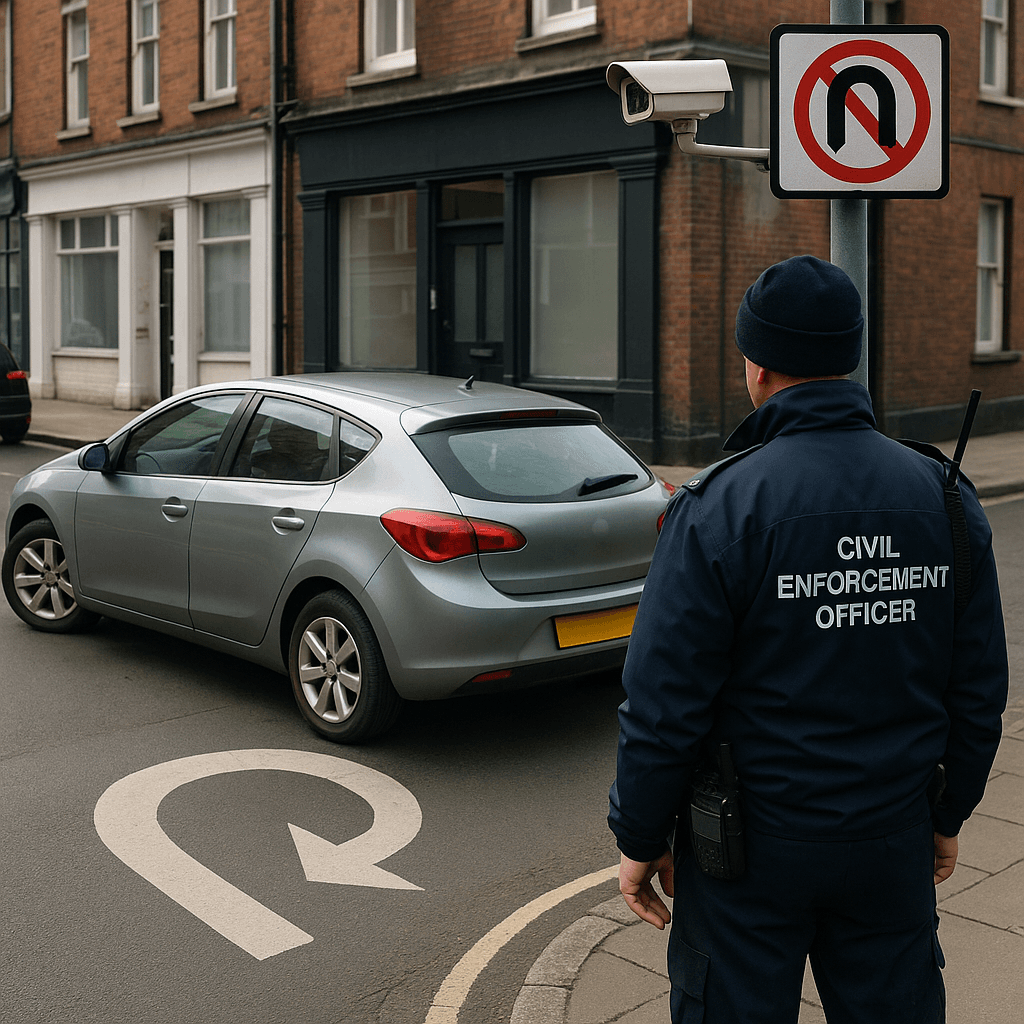
Understanding PCN Code 33: Illegal U-Turns Explained
Carlos Mendoza
•5 min read
Understanding PCN Code 33: Illegal U-Turns Explained
Imagine this: it’s a typical Tuesday morning, and you're running a tad late for work. The traffic is heavier than usual, and in a moment of haste, you decide to make a quick U-turn, disregarding the sign that prohibits it. A few weeks later, you receive a Penalty Charge Notice (PCN) with the ominous code 33. What does this mean, and how can you deal with it? Let's dive into the world of PCN Code 33 and unravel the mystery of illegal U-turns in the UK.
What is PCN Code 33?
PCN Code 33 relates specifically to illegal U-turns. In the UK, traffic regulations are strict about where and when you can legally execute a U-turn. This contravention code is assigned when a driver makes a U-turn in a location where it is expressly forbidden, often indicated by clear signage. Such manoeuvres can disrupt traffic flow and pose safety risks, which is why they are closely monitored by councils and traffic enforcement officers.
The Legal Framework Behind U-Turn Restrictions
Under the Road Traffic Act 1988 and the Traffic Signs Regulations and General Directions 2016, specific areas are designated as U-turn prohibited zones. Councils have the authority to enforce these rules and issue PCNs to violators. The signs are usually circular with a red border and a black U-turn symbol crossed out, making them hard to miss if you’re paying attention.
Why Are U-Turns Restricted?
- Safety Concerns: Sudden U-turns can lead to accidents, especially on busy roads or near intersections where visibility might be limited.
- Traffic Flow: Unauthorised U-turns can disrupt the smooth flow of traffic, leading to congestion and delays.
- Road Layouts: Some roads are simply not designed to accommodate U-turns safely due to their width or surrounding environment.
What Happens If You Receive a PCN Code 33?
Receiving a PCN for an illegal U-turn might feel like a major setback, but understanding the process can help you manage the situation more effectively.
Breaking Down the Notice
- Details of the Offence: The PCN will include details such as the date, time, and location of the contravention.
- Penalty Amount: Typically, the fine ranges from £60 to £130, depending on the specific council and whether the fine is paid within a set period (usually 14 days for a discounted rate).
- Instructions for Payment or Appeal: The notice will provide information on how to pay the fine or lodge an appeal if you believe it was issued in error.
Tips to Avoid PCN Code 33
To steer clear of these fines, consider the following practical advice:
- Stay Alert: Always be on the lookout for road signs indicating U-turn restrictions. These signs are your first line of defence against inadvertently committing an offence.
- Plan Your Route: Use navigation apps that highlight road restrictions, helping you avoid prohibited areas.
- Understand Local Rules: Different councils might have varying rules on U-turns, so familiarize yourself with local regulations, especially when driving in a new area.
Challenging a PCN Code 33
If you believe the PCN was issued incorrectly, you have the right to appeal. Here’s how:
Step-by-Step Appeal Process
-
Review the Evidence: Councils often provide photographic or video evidence of the alleged offence. Review this carefully to ensure it matches the details of the notice.
-
Grounds for Appeal: Valid reasons might include unclear signage, incorrect vehicle identification, or extenuating circumstances such as an emergency.
-
Submit Your Appeal: Use the official channels provided in the PCN to submit your appeal. This is often online through the council’s website.
-
Await Response: The council will review your appeal and respond with their decision. If unsuccessful, you may take the appeal to the Traffic Penalty Tribunal for further consideration.
Pro Tips for a Successful Appeal
- Be Thorough: Provide any supporting documents or evidence that can strengthen your case, such as dashcam footage or witness statements.
- Be Prompt: Ensure you lodge your appeal within the timeframe specified on the PCN to avoid losing your right to contest.
- Stay Professional: Keep your communication clear and concise. Emotional or confrontational language can detract from the credibility of your appeal.
Real-World Scenarios
Consider this scenario: Sarah was driving in London and missed the U-turn prohibition sign due to heavy fog. She received a PCN Code 33 weeks later. Sarah reviewed the council’s evidence and noted that the sign was indeed obscured. Armed with this information and a weather report from that day, she successfully appealed the fine.
Conclusion
Navigating the world of PCNs and contravention codes might seem daunting, but with the right knowledge and preparation, you can handle these situations like a pro. Remember, the key to avoiding a PCN Code 33 is awareness—pay attention to signs, plan your journeys, and always drive with caution. Should you find yourself facing a fine, don’t rush to pay without first considering your options for appeal.
Next Steps
- Check Local Traffic Regulations: Familiarize yourself with the rules in your area or any area you plan to drive in.
- Download a Reliable Navigation App: Choose one that provides real-time updates on road restrictions.
- Stay Informed: Keep up with changes in traffic laws that might affect your daily commute.
By staying informed and vigilant, you'll not only avoid unnecessary fines but also contribute to safer roads for everyone. Happy driving!